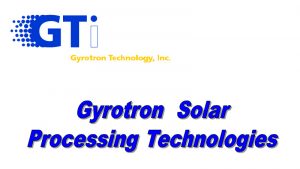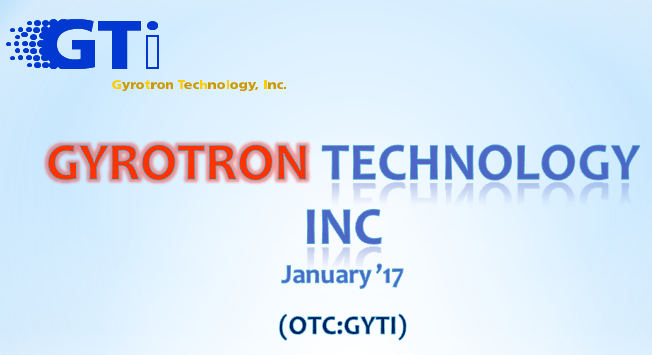Solar Processing Technology
Solar Processing Technology
Gyrotron Technology Inc. (“GYTI”), has developed a number of technologies related to solar panel manufacturing processes. The primary one is a unique technology for annealing silicon thin film solar cells which allows for improved and ultra-fast recrystallization of an amorphous Si (a-Si) layer on a glass surface into a poly-silicon (p-Si) structure. The main advantages of this approach are:
- Increased solar efficiency (through larger crystalline structure)
- Can be used for soda-lime glass
- Production efficiencies
Traditionally, a silicon thin film solar cell, is fabricated through the method of plasma-enhanced chemical vapor deposition of a thin film of Si having a microcrystalline structure. This results in the creation of an a-Si layer on the glass surface. Then a-Si, which has lower carrier mobility and thus lower efficiency then than the polycrystalline p-Si, is transformed into a p-Si structure by heating the a-Si under high temperature. Currently the main method to accomplish this is heating using an excimer laser or pulse light. These methods have well known limitations in productivity and quality (crystal size). They also require the use of expensive borosilicate glass.
GYTI’s utilizes the gyrotron, which generates microwaves in a Gaussian beam with a wavelength from one to 10 mm and intensity more than 5 KWt/cm2. Radiation of such wavelengths and power density allows extremely rapid heating (up to 20,0000C/sec) of nonmetallic materials. This heating can be so rapid that virtually any region or layer inside an exposed material can be heated up to any required temperature, leaving the surrounding regions cold or at selected differing temperatures.
Using these special properties of gyrotron radiation we have produced samples in which we melted and recrystallized thin and thick layers of a-Si on soda lime and borosilicate glass for solar modules, as well as, a-Si on LCD glass (for displays). We have succeeded in heating the a-Si layers to over 10000C (and up to 12000C) in a fraction of a second without damaging the glass substrate. It was confirmed that re-crystallization was successful and efficiency was increased.
The gyrotron beam is also a perfect heating tool for activating the solar semiconductors layers after crystallization, because the gyrotron can create a sharp heating pulse. Cold air that is transparent to the beam can be used during processing to “sharpen” said pulse.
There are some other possibilities for advanced use of the gyrotron beam in solar manufacturing processes. It can be used to preheat glass substrates in vacuum before sputtering in a fraction of a minute and a fraction of the space, thus substantially reduce energy consumption and equipment size. Further, preheated glass after sputtering could be tempered after additional brief rapid heating by the gyrotron.
GYTI has also developed a gyrotron beam technology for encapsulating semiconductor coatings between two glass sheets by very rapidly and selectively melting frit. This technology provides an excellent barrier to moisture and can be very effective for solar modules, especially for CIGS and other types of solar coatings that are very sensitive to moisture





